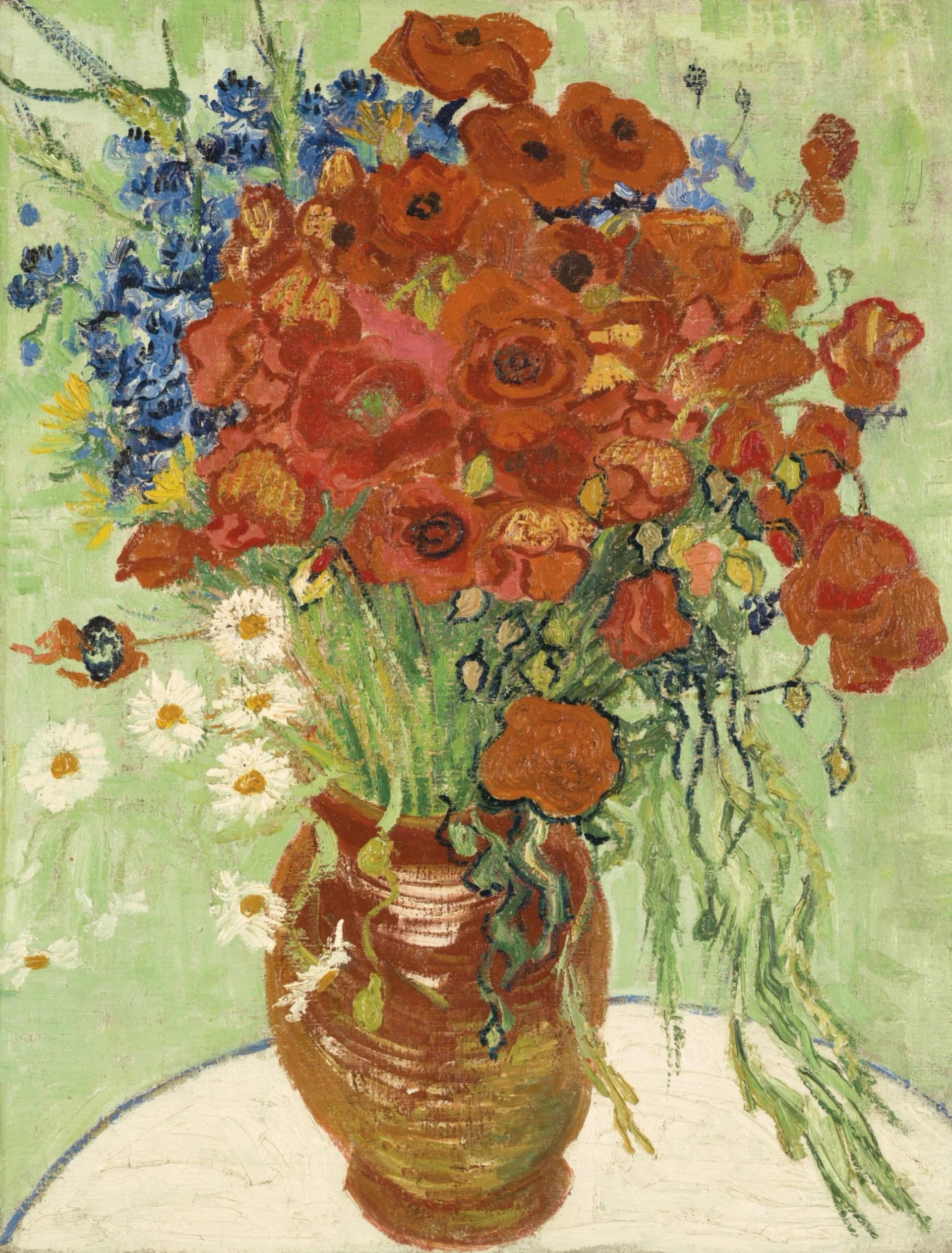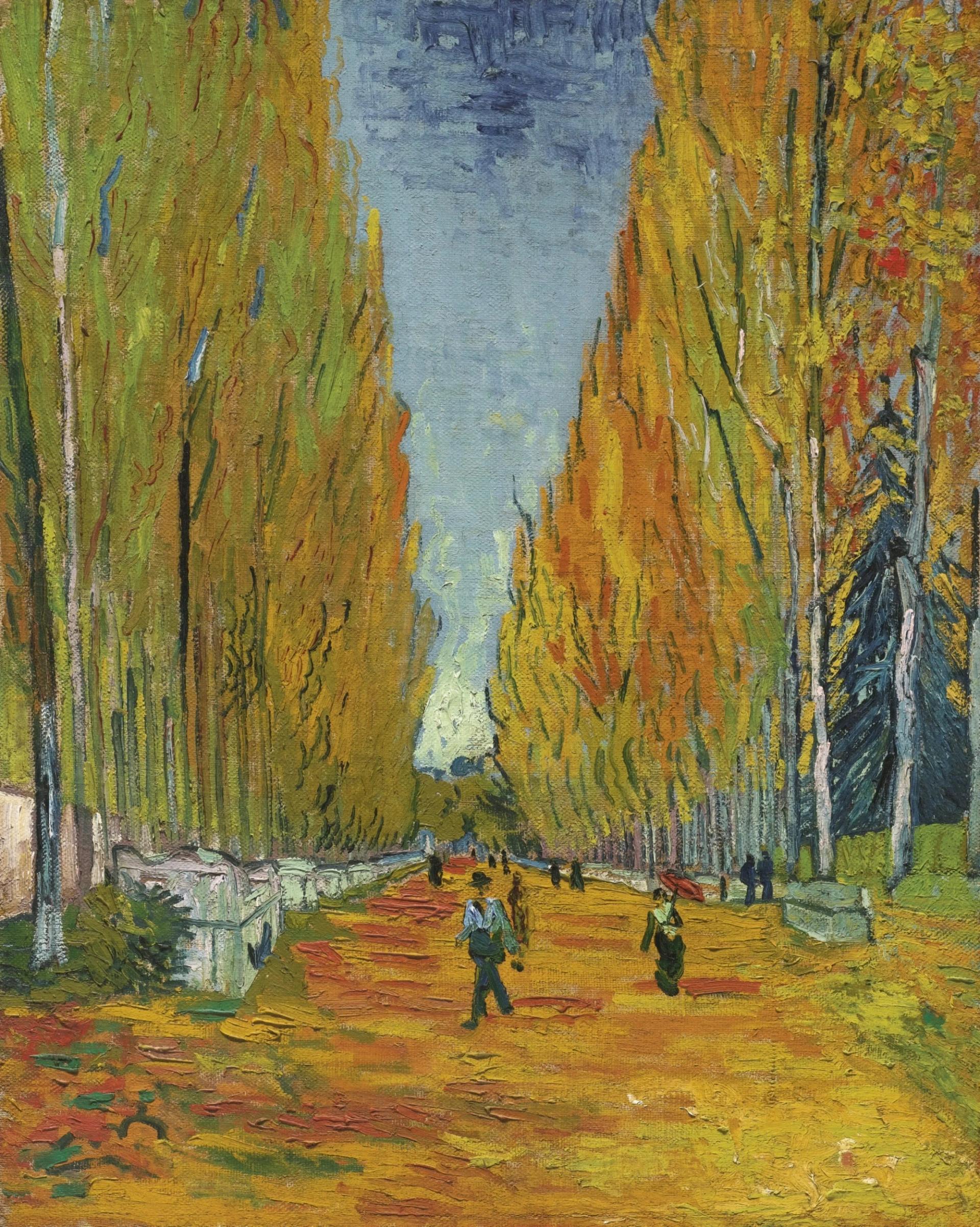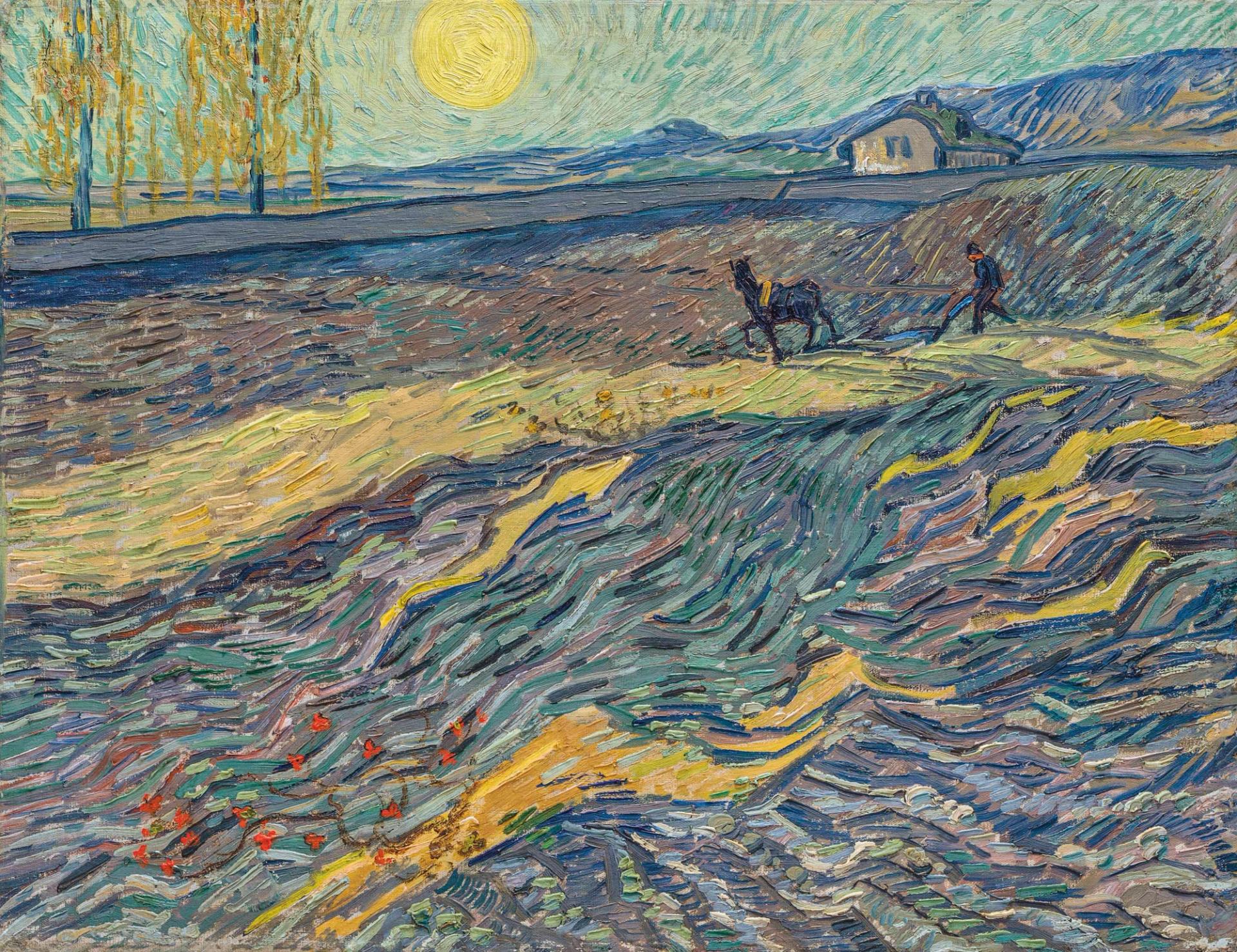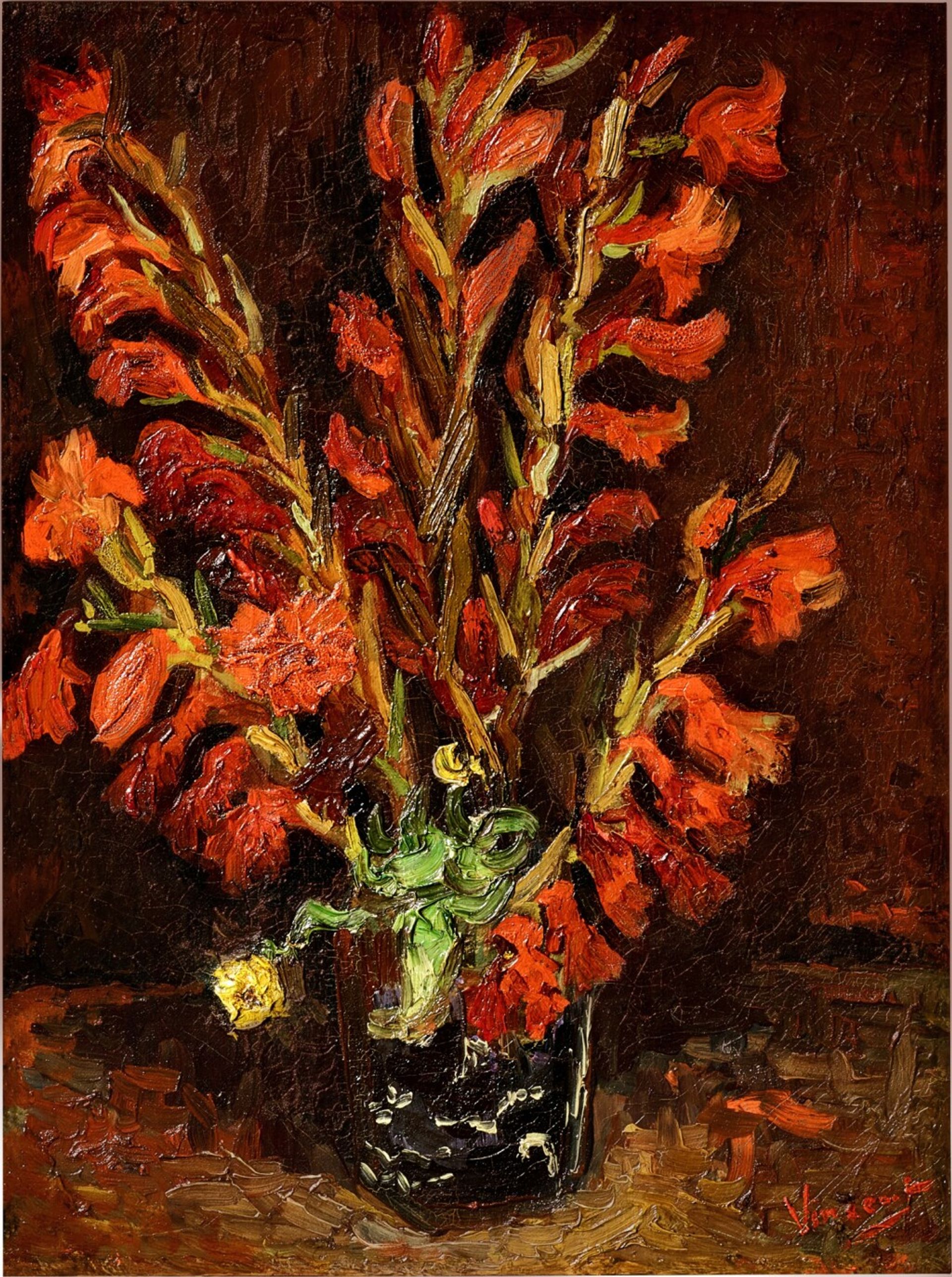Of the seven most expensive Van Gogh pictures which have sold at auction, at least three (and possibly more) went to Chinese buyers from the mainland, Hong Kong and Taiwan. All were bought during the past nine years, at prices of over $60m.

Van Gogh’s Vase with Poppies and Daisies (June 1890), sold for $62m at Sotheby’s, New York, 4 November 2014
Credit: Sotheby’s
Vase with Poppies and Daisies (June 1890), the first known major Chinese purchase of a Van Gogh, was bought at Sotheby’s in 2014 for $62m. The buyer of this striking still life, completed just a month before the artist’s suicide in Auvers-sur-Oise, was Wang Zhongjun, a Chinese entertainment company founder and artist.

Wang Zhongjun’s Self-portrait, painted in Van Gogh-style colours and impasto (2015)
Courtesy Wang Zhongjun and Tang Contemporary Art
Speaking just after buying Poppies and Daisies, Wang casually remarked that it would “make my home more colourful”. The painting then hung in his Hong Kong residence. In 2021 Wang stepped down as chairman of Huayi Tencent Entertainment, the company he had helped establish. It is unclear whether he still holds Poppies and Daisies, although the painting apparently remains in Chinese ownership.

Van Gogh’s The Avenue of Les Alyscamps (November 1888), sold for $66m at Sotheby’s, New York, 5 May 2015
Credit: Sotheby’s
When the Arles landscape The Avenue of Les Alyscamps (November 1888) came up at Sotheby’s in 2015 it was bought for $66m, apparently by Robert Wu, a Taiwanese gallery owner. It is believed that he may have been bidding for an unidentified Chinese collector.

Van Gogh’s Labourer in a Field (September 1889), sold for $81m at Christie’s, New York, 13 November 2017
Credit: Christie’s
Labourer in a Field (September 1889), showing a stylised view from Van Gogh’s bedroom widow at the asylum just outside Saint-Rémy-de-Provence, sold for $81m at Christie’s in 2017, going to an anonymous Chinese buyer.
Another painting among the ten most expensive Van Goghs at auction was Young Man with a Cornflower (June 1890), which was sold at Christie’s in 2021. The estimate was $5m-$7m, but it soared at the sale and went for $47m. There was considerable interest in the painting from the East Asia. Although the buyer remains anonymous, bidding from Chinese collectors almost certainly pushed up the final price.
Marie Laureillard, a lecturer in Chinese studies in Lyon, has been following the emergence of these East Asian buyers of Van Gogh. She contributed an essay in Collecting Impressionism: The Role of Collectors in Establishing and Spreading the Movement, a book to be published later this month by Milan-based Silvana Editoriale.
Laureillard suggests that the growing love for Van Gogh in China may be explained by their fascination with his personality: “His madness, perceived in a positive way, appears to be considered as a sign of this famous creator’s sheer genius.”
The emergence of Chinese buyers of Van Gogh is only the latest chapter in the story of an artist who failed to sell during their lifetime, but whose works now fetches record sums. There have been major shifts in the market for Van Goghs since the Second World War.
In the first few decades the main buyers were American, along with some Europeans. In the 1980s the Japanese came on board, most notably marked by the acquisition of one of the versions of Sunflowers (December 1888-January 1889) in 1987. The Tokyo-based Yasuda insurance company paid £25m, then a record price for any artwork at auction.
Since 2000 new emerging markets for Van Gogh’s work have opened up, particularly among Russians, Koreans and, above all, the Chinese. As the market expands, prices inevitably rise.

Van Gogh’s Still life: Vase with Gladioli, (August-September 1886), sold for HKD 71m ($9.1m) by Sotheby’s, Hong Kong, 9 October 2021
Credit: Sotheby’s
In 2021 Sotheby’s became the first auctioneer to sell a Van Gogh in East Asia. Still life: Vase with Gladioli was offered at their Hong Kong branch, fetching HKD 71m ($9.1m). Although the buyer has remained anonymous, they may well have been local.
It is now common for Van Goghs which are auctioned in London and New York to be toured to Hong Kong to be displayed or privately shown to potential clients a few days before the sales. This happened last month with Christie’s Head of a Woman (Gordina de Groot) (March-April 1885), which then sold in London to an anonymous buyer for £4.8m, considerably above the £1m-£2m estimate.
Another indication of wider Chinese interest in Van Gogh is the National Gallery’s marketing of its current touring exhibition, Botticelli to Van Gogh: Masterpieces from the National Gallery. It is now at the Shanghai Museum (until 7 May) and then goes to Seoul’s National Museum of Korea (2 June-9 October). The main promotional image is Van Gogh’s Long Grass with Butterflies (April 1890), representing the painter who will pull in the crowds.
Other Van Gogh news:
The March issue of The Burlington Magazine includes an article by British art historian James Hall on Van Gogh’s interest in Egyptian art, "Becoming ‘obeliscal’: Van Gogh, ancient Egypt and the global Orient – I: figures”, with a second part due to be published in their April issue. The thesis that Egyptian art played a key role in Van Gogh’s work is likely to prove controversial.



